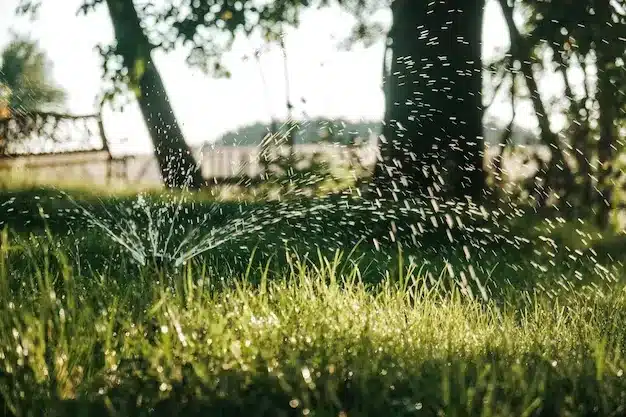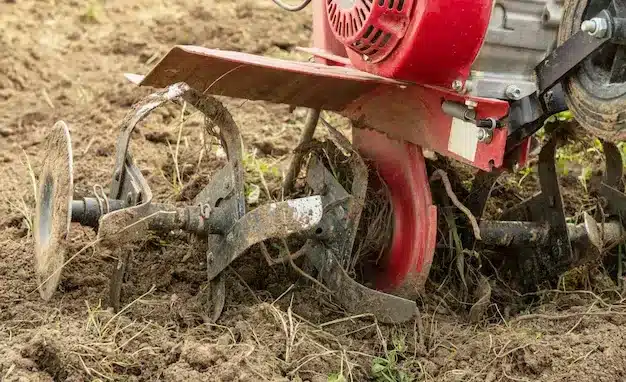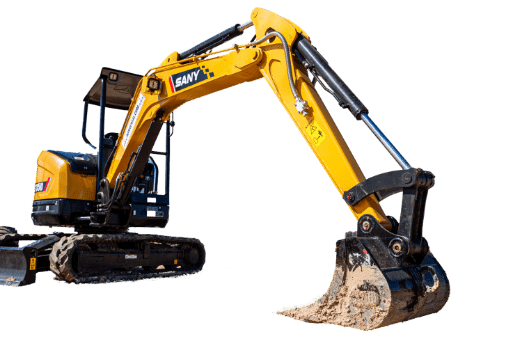A garden filled with lush, green grass is a sight for sore eyes, but when it’s time to introduce a new garden bed or redesign your landscape, the grass can become a stubborn obstacle. This is where using a tiller rather than a lawn mower to remove grass comes in handy. This guide will walk you through the process of how to use a tiller machine to remove grass effectively and efficiently.
Understanding a Tiller and Its Usage for Grass Removal
A tiller is a versatile tool that is primarily used for breaking up and turning over soil in preparation for planting. However, its functionality is not limited to just that. When your land is overrun by grass that needs to be removed, a tiller can be your best friend. The tiller works by digging into the surface of the land, making the removal of grass a breeze. However, it’s important to note that not all tillers are created equal. Some are more suited for this task than others, particularly those with adjustable settings.

Preparing the Area for Tilling
Before you begin the process of using a tiller to remove grass, it’s important to ensure that the area is prepared. This involves inspecting the area to identify any large grass or weeds that the tiller may struggle to penetrate. If any debris, rocks, metal objects, or stones are present, they should be removed to prevent potential damage to the tiller’s blades. Even a robust tiller can’t cut through hard objects without risking damage. Once the area is clean and free of obstacles, you’re ready to commence the tilling process.
Moistening the Soil for Easy Tilling
If the soil in your garden is dry and hard such as clay soils, it can be difficult for the tiller to penetrate. This is why it’s recommended to water the soil prior to tilling, making it semi-dry. This state allows the tiller blades to cut through the soil more easily and smoothly, enhancing your efficiency. However, it’s essential to avoid overwatering the soil to the point where it becomes muddy, as this can hinder the tilling process and kill grass. The goal is to soften the soil, not turn it into mud.

Selecting the Right Tiller
Choosing the right tiller for your needs is crucial. The size of the tiller should be appropriate for the size of the land you’re tilling. A larger tiller might be necessary for larger areas to cover more ground in a single pass. If the tiller is electric, consider the cost of operating it. If the cost and effort outweigh the benefits, consider hiring a professional to do the job.

Safety Precautions During Tilling
Safety should never be compromised when using a tiller. Because you’re dealing with a machine that has rotating blades, it’s important to wear appropriate safety gear. This includes safety glasses, gloves, closed-toed shoes, full-length pants, and even a jacket. It’s also critical to understand how to operate the tiller correctly. Always follow the manufacturer’s instructions and never leave the tiller unattended while it’s running.
Digging Deep With the Tiller Blades
Once you have prepared the area and the tiller, it’s time to get to work. Start by setting the tiller and pressing the clutch lever to allow the rotating blades underneath to dig into the soil. Allow the tiller blades to dig deep enough to be satisfied with the results. However, if you dig too deep, you can kill beneficial organisms. Once the tiller has reached the appropriate depth, slowly push it forward, allowing it to stir up the soil beneath the blades, ensuring that the tiller is moving straight for consistency.

Tilling in a Consistent Pattern
As you till the land, it’s important to maintain a consistent pattern. This ensures that the entire area is covered and that the soil is properly mixed with organic material. Make sure to cover new rows without leaving any gaps between them or else this process could be a grass killer. To make this process foolproof, overlap the new row slightly with the previous one, ensuring that no grass is left untouched.
Wrapping Up
Using a tiller to remove grass can be a great solution if you’re planning to transform your lawn or garden. However, it’s crucial to understand how to use a tiller properly to ensure safety and efficiency. Always remember to follow the guidelines and safety precautions mentioned above. If you need to till a large area and are not comfortable doing the job yourself, consider hiring a professional.
At AOS Rental, we offer a wide range of tillers suitable for different needs. Whether you’re a do-it-yourself enthusiast or a professional landscaper, we have the right tools for you. Reach out to us today to find the perfect tiller for your grass removal project.
Frequently Asked Questions

Before we wrap up, let’s go over some common questions about using a tiller to remove grass.
Is a tiller the same as a sod cutter?
While tillers and sod cutters both involve grass, their uses differ when it comes to results. When using a tiller, grass is torn up by blades but roots are left in order to germinate in the future. Sod cutters are better for lawn removal as they completely remove grass exposing underlying soil and kill weeds.
Should I till before planting grass?
Tilling before planting grass can be beneficial as it creates a friendly environment for the seeds, allowing you to level the land and eliminate weeds.
Can I use a tiller in the rain?
It’s not recommended to use a tiller in the rain as it can damage the machine and make it harder to operate. It’s best to till after the rain has stopped when the soil is semi-dry.
Should I remove grass before tilling?
Yes, removing grass before tilling can make the process smoother and prevent the dead grass from regrowing.
Can I plant immediately after tilling?
It’s not advisable to plant immediately after tilling. Tilling exposes dormant weed seeds, grass clippings, and grass roots, so it’s best to let them die off before planting.









